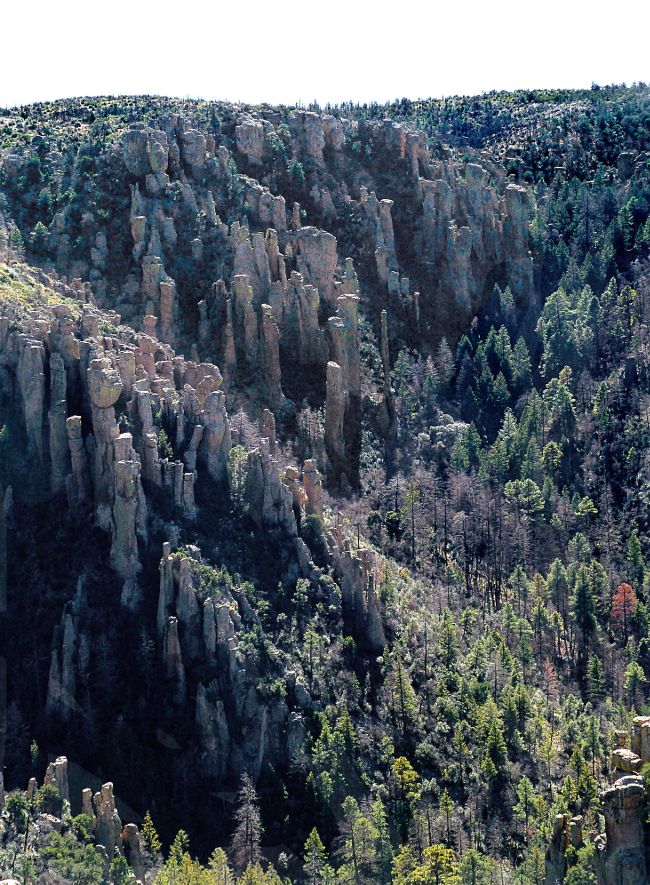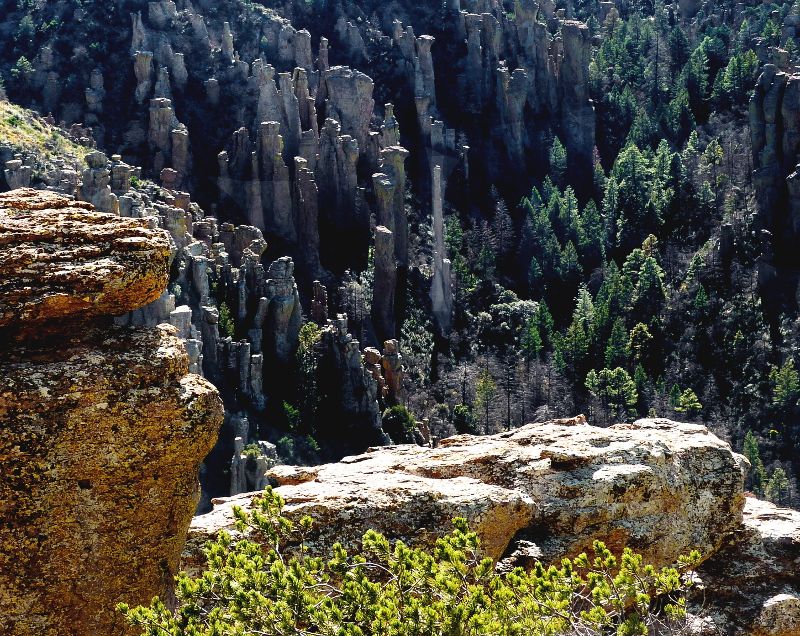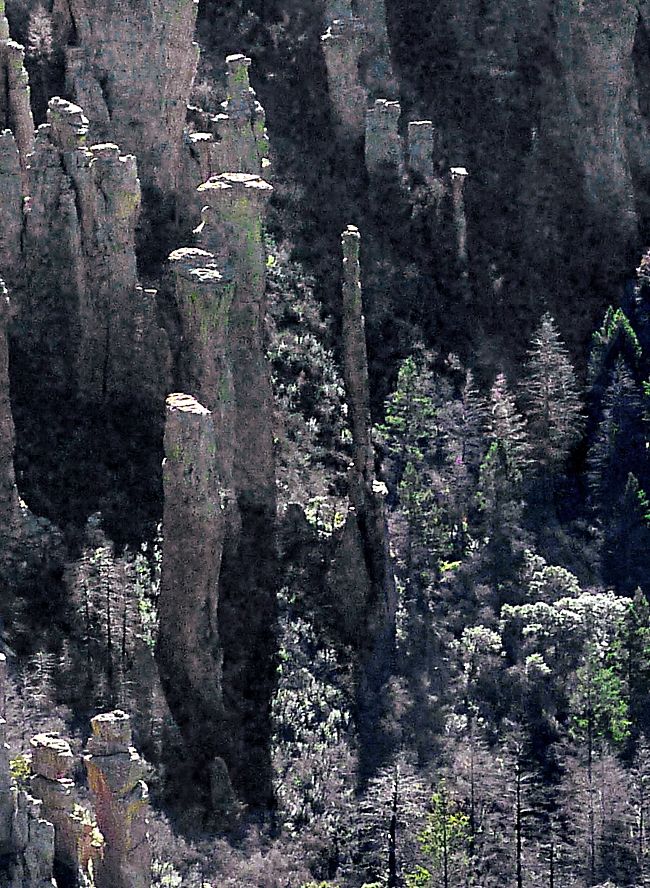People fear what they don't understand and hate what they can't conquer. - Andrew Smith
Apache. Is there any word in the American vernacular that evokes stronger responses of mixed awe and fear?
Even as they waged wars of extinction against them, Americans have always had a fascination with Native-Americans… and the Apache hold a special place in the American psyche for maintaining the most unbending resistance to being “civilized” for the longest period of time of any tribe.
When the Spanish entered what we now call the American Southwest, they found two distinctly different kinds of Natives living there. There were groups like the Hopi that lived for much or all of the year in one place. They hunted and fished, but also farmed. These groups shared the land with the nomadic tribes like the Apache. The Apache were entirely nomadic. They didn’t have a single “home” – they had instead a variety of places that they would return to depending on seasons and weather conditions. They lived primarily by hunting and supplemented their nutrition with gathering. In particular, the Apache hunted buffalo.
Will Rogers notoriously quipped “I am not a member of any organized political party – I’m a Democrat.”
The Apache can identify with that sentiment. Though they shared common roots… and in fact also shared roots with the large Navajo tribe… the Apache never organized well. They spent most of the year traveling in smallish family-centered bands. Ranging over what we now call Arizona, New Mexico, and the Mexican province of Sonora, the Apache groups spoke many different, if related, languages and didn’t get along well with each other. They shared a common disdain for other tribes and Europeans and Americans – but they were never able to band together to create effective opposition to the conquerors.
Women did all the domestic chores – and would fight when necessary. Men were trained from the youngest age to be warriors and hunters. The Apache are legendary for their strength and endurance. It was said that a warrior could run a hundred miles in a day across the unforgiving desert and could climb the highest mountain without becoming winded. They valued bravery and ferocity. The Native tribes around them lived in fear of their raids.
When the Spanish came, the Apache quickly adapted to using horses and became even more formidable hunters. The Spanish rapidly learned that the Apache had a quite different take on “right and wrong” and didn’t really consider the Spanish “human.” The Apache looked at Europeans and “tame” Indians as lesser creatures – but great sources of challenges, wealth, and materials. What a European considered “theft”was, to an Apache, just another version of living off the land. “Hunting and gathering” included “harvesting” livestock from ranches and settlements… and killing anyone who presented opposition or, sometimes, just got in their paths.
Conflicts between the Spanish and the Apaches began immediately when they came into contact in the mid-1550s. They continued through the centuries. In 1837, the Apache chief Mangas Coloradas (Red Sleeves), also known as Dasoda-hae (He just sits there), led the Apache in opposition to the Mexicans. In the next 20 years, they would kill or abduct many thousands of settlers and caused the abandonment of hundreds of settlements.
In the mid-1800s, the US took control of the area and the Apaches shifted their hostilities – but continued to fight. The Americans attempted to force the Apache onto reservations. During the following decades, various groups of Apache would go onto reservations, only to find the conditions intolerable and to escape to raid ranches and settlements. Two leaders, in particular, Cochise and Geronimo, lead effective opposition to the American military and settlers.
The Apache were the last “wild Indians.” It wasn’t until 1887 that the last rebellion ended in 1887, when 5000 soldiers surrounded Geronimo and 30-50 Apache and they were sent off to imprisonment in Florida.
The Idiots were seeking a wilderness getaway… a beautiful place to sit and enjoy nature while recharging their emotional batteries. Researching the map, they found Chiricahua National Monument in remote southeastern Arizona. They were not disappointed. The 22 spot campground rarely had more than 5 sites filled in mid-November… and the constantly changing light provided no end of visual pleasures. This is land where Chochise an his Chiricahuas would hunt and find refuge from the summer heat… and where they could easily avoid large numbers of American military seeking them.
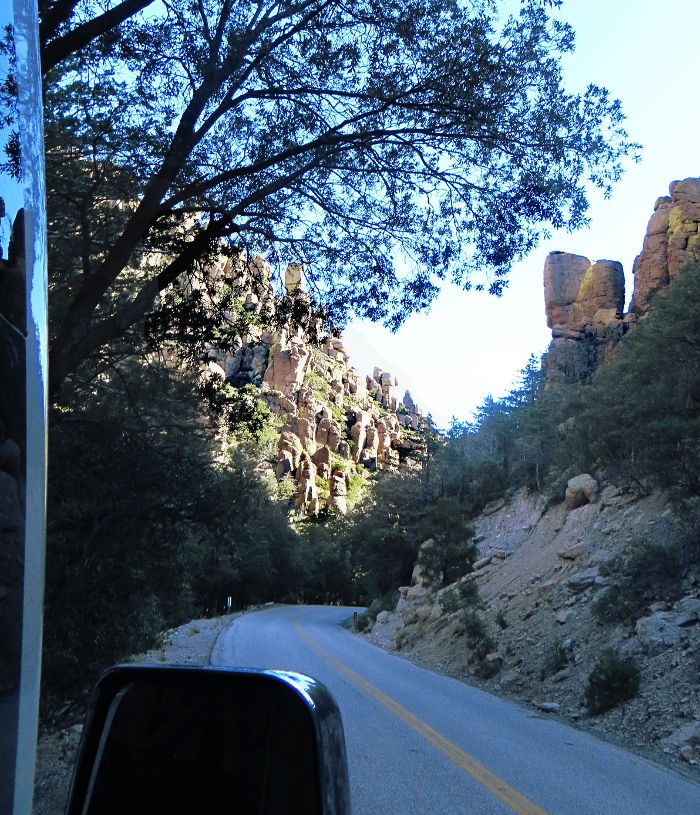
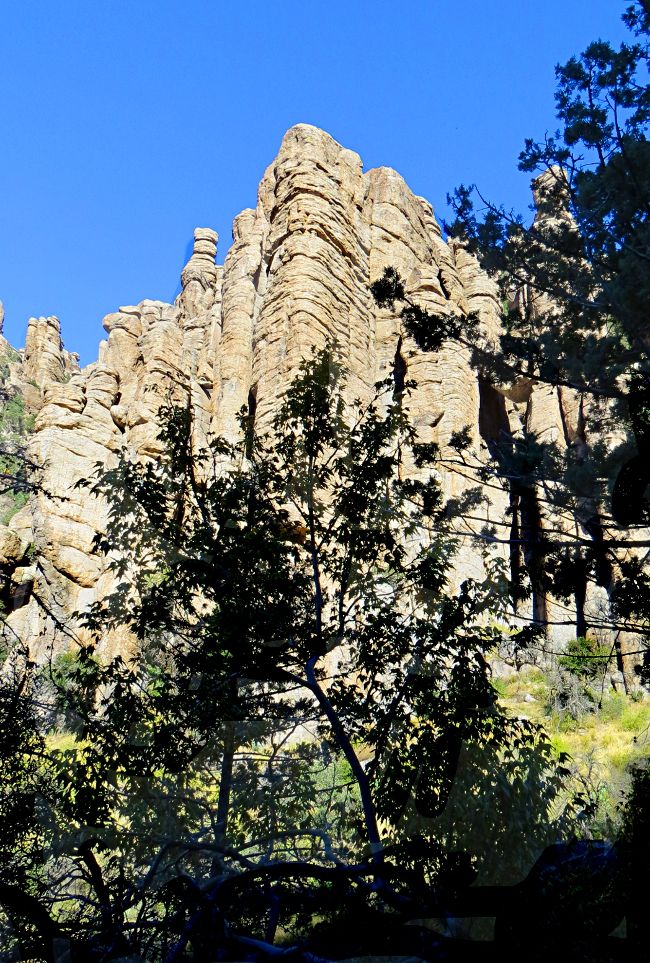
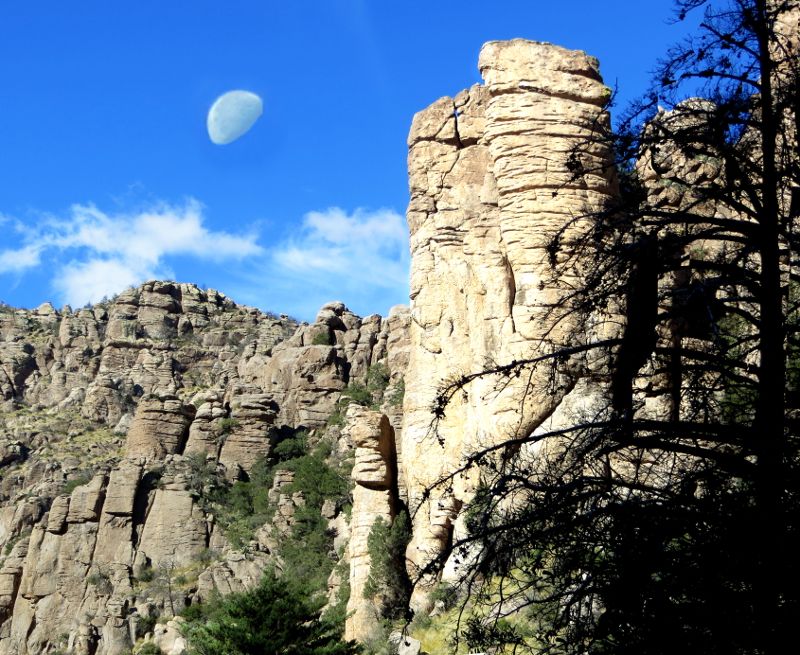
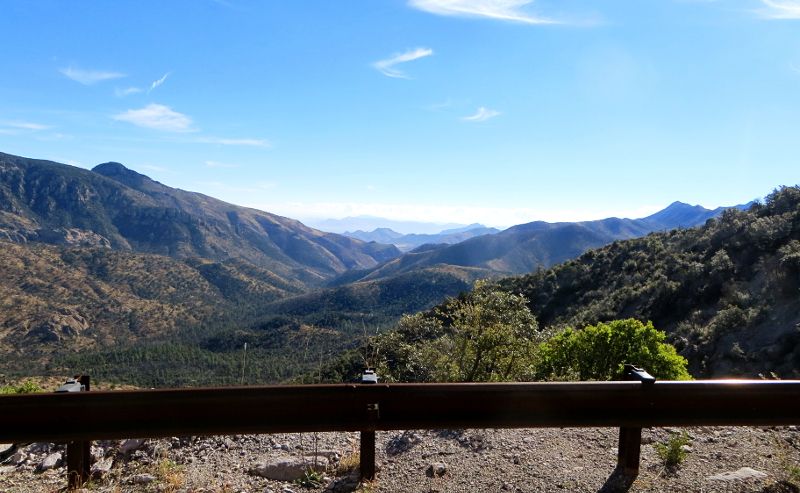

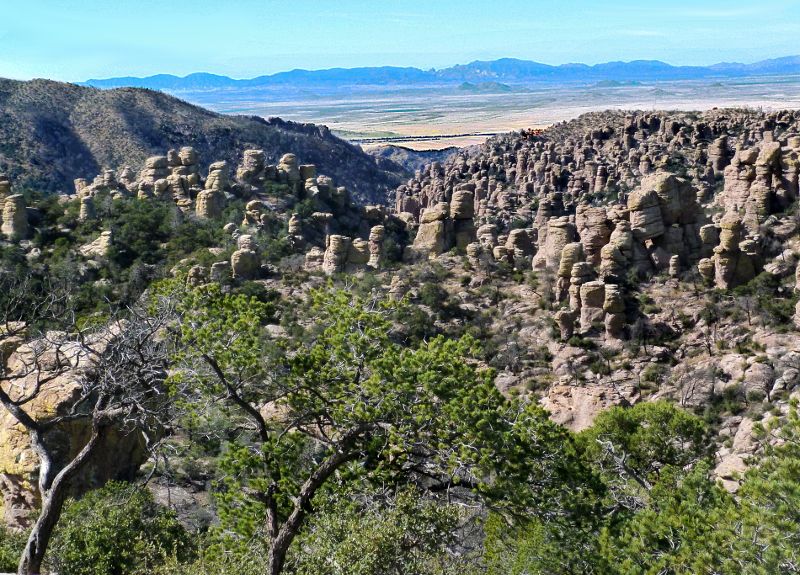

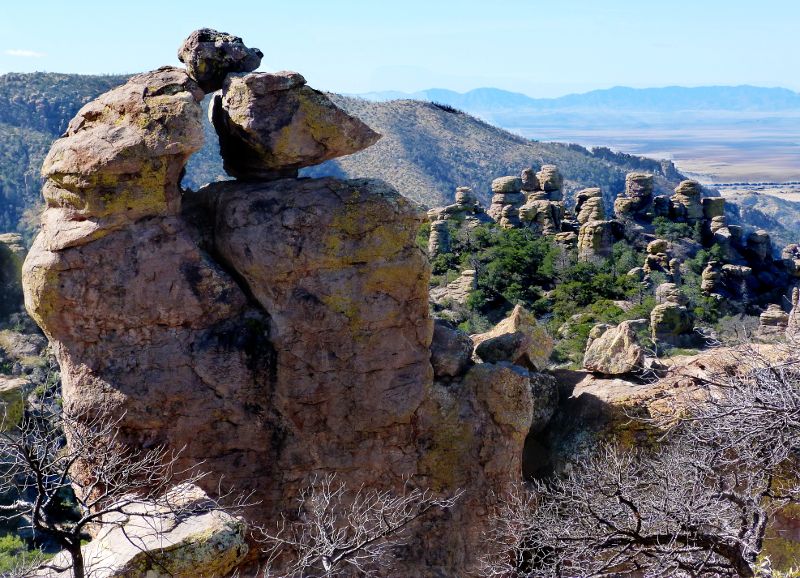
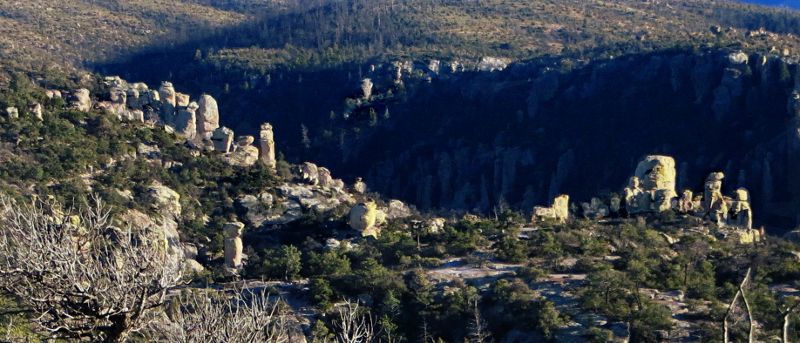
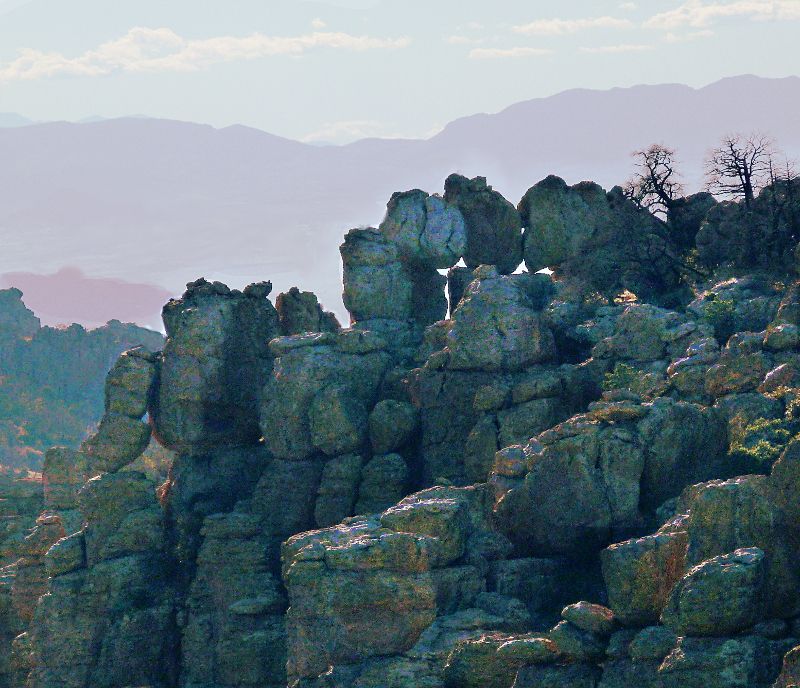
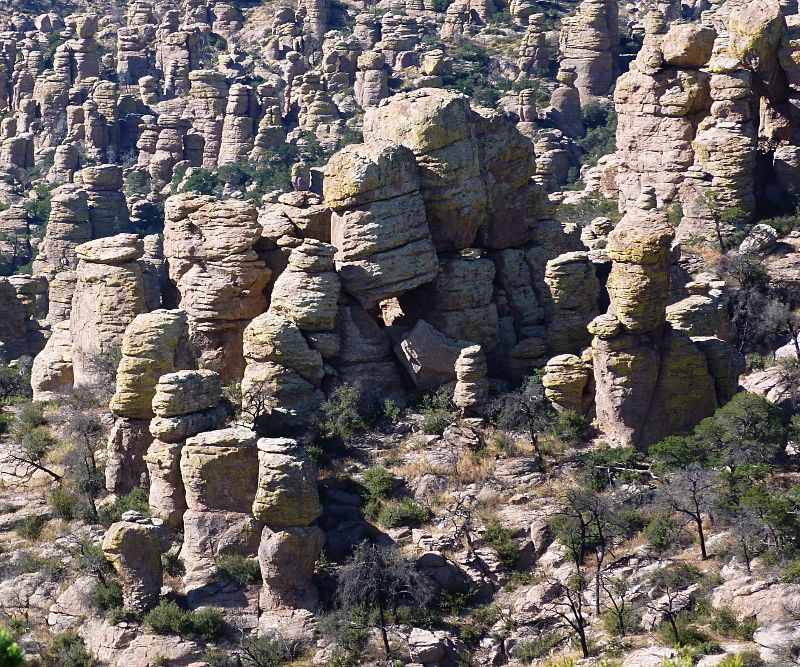
In the Southwest, sculpted columns of rock are often called “Hoo-doos.” In this area, these is one column they call “The Totem Pole” – it is 137 feet tall, and at one spot near its base it s only 3 feet in diameter…
